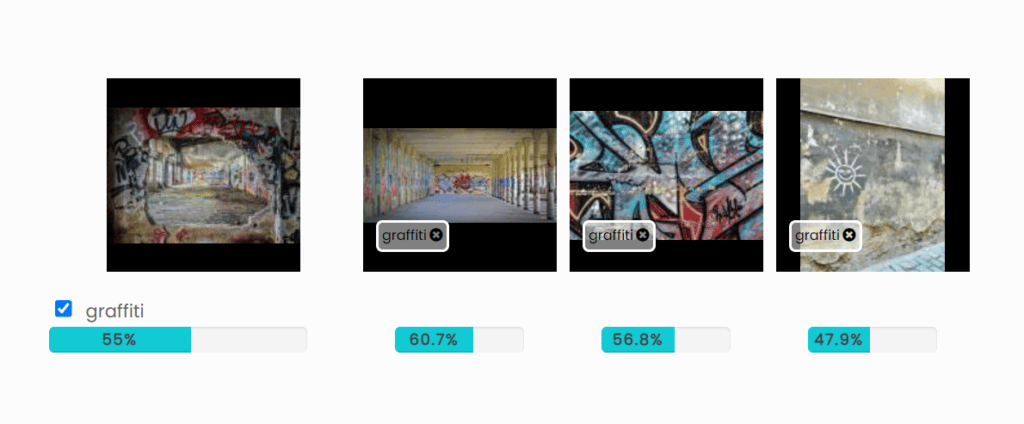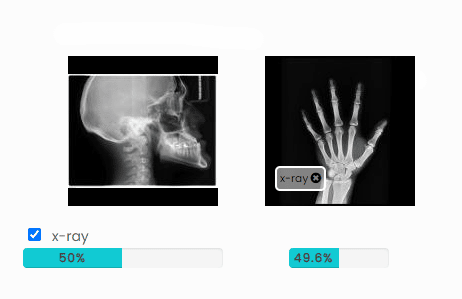Supervised machine learning is a subcategory of artificial intelligence, which uses labeled data to carry out machine learning tasks. In computer vision applications, labels on the images (metadata, descriptions, etc.) are used to train the model, which then uses this information to determine what is in the image.
The basic objective of such models is to precisely anticipate the desired outcome for unknown data. In a variety of industry use cases that allow businesses to use data to enhance proper results in their operations, supervised machine learning is by far the most used technique. For example, this is evident through image recognition in retail.
One thing is clear, to provide fruitful results the labeled data at hand is crucial to the model’s efficacy.

Labeling challenges
To train a well-performing machine learning model, vast amounts of data accurately representing real-world examples are required, usually consisting of hundreds and thousands of images. Manual labeling and quality assurance require a substantial human workforce, it being a tedious and resource-heavy process. Besides that, labeling the dataset comes with other obstacles:
- Workforce issues: this challenge covers both finding the required amount of hard-working image annotators that label accurately and being able to effectively manage them. In order to tackle both these challenges, SentiSight.ai provides convenient and efficient project management capabilities. Additionally, we have partnered with Biz-Tech Analytics to provide managed human workforce for image annotation services.
- The amount of data: depending on the complexity of the task and the speed of the data annotator, a typical dataset of 100,000 images with 5 objects per image takes approximately 1,500 hours to label. In comparison, the largest manually-labeled dataset Imagenet consists of over 14 million images spread across 20,000 different classes. Labeling such a dataset manually would cost a lot in regard to time and money, not to mention all the time that would need to be spent on quality control.
- The quality of data: while good quality data is always the main goal, that is not usually the case. With thousands of images within a dataset, it is easy to find images that are not clear, blurry, or distorted. Accurately labeling objects can become a challenge for data annotators.
- Weak labeling: when working with large-scale web image training sets, it is common to run into labels for training images that are partial, erroneous, or unevenly distributed. This might happen if the labeling process becomes too expensive, there is not enough time to label them correctly, or when people labeling the images add only a few labels without providing an exhaustive description.
- Perfectionism in labeling: new annotators frequently spend too much time on one assignment since they are labeling so meticulously. Although accurate labeling is a highly sought-after ability, it must be balanced with speed and accuracy to be effective.
Challenges such as the quality and amount of data may damage the model learning resulting in the insufficient performance of the final model, while the rest of the challenges require the team to spend extra time on the computer vision task and delay its finish.

One of the solutions to tackle labeling challenges is to automate the image annotation process.
Automated AI-assisted image labeling
SentiSight.ai classic AI-assisted image labeling requires the user to label a small data sample, train a model on this data, and then use this model to predict labels for the rest of the dataset.
Additionally, this technique requires manual human intervention for quality assurance to double-check that the model has labeled the dataset correctly. This creates great accuracy since it was trained with specific requirements in mind working on a particular task, although it does require extra manual steps at the beginning of the task and during quality assurance.
In order to provide more help and support in image annotation tasks, SentiSight.ai provides an option to label images by similarity.
Image similarity is a measurement to evaluate how much several pictures are alike. It addresses the issue of locating objects that are the most similar to or closest to the input data within big datasets that typically do not have a natural order of items.
Its applications include hierarchical data clustering and analysis, near-duplicate detection, and the development of recommendation systems, among other use cases.

Image similarity measurement can be applied to AI-assisted image labeling to improve efficiency. Such a labeling technique requires minimal manual preparation:
- A small data sample needs to be labeled to set the ground truth.
- The user can use labeling by similarity immediately to assign labels to photos based on how similar they are to previously labeled images by directly comparing them to those images.
This technique is more efficient than the classic AI-assisted image labeling since the similarity model does not need to be trained beforehand. Even if the dataset consists of niche class objects, since the ground truth data sample is provided, labeling by similarity will offer predictions despite having just one image per label. The labeling process is sped up by reviewing suggested labels, which is usually quicker than labeling them from scratch.
How to use Labeling by Similarity on the SentiSight.ai platform?
Labeling by Similarity can be performed either on already existing pictures or by uploading new images to the project.
There are a few parameters that shall be adjusted for the best model performance.
- A number of results: the parameter defines the number of the most similar photos that will be used to make label suggestions for the search images. When the ground truth data consists of a small number of labeled examples per class, it should be set to 1 or a similarly small number. In contrast, when the dataset contains many labeled examples per class, the number of results should be set higher.
- Single-label annotations: if “Mark only top scoring label” is selected, SentiSight.ai will mark only the best-performing classification label as opposed to all classification labels above the threshold.
- Threshold: the threshold number should be set based on the dataset as a whole. All labels that score higher than this limit will automatically be marked which is helpful for multi-label classification labeling.
If you are unsure about the parameter selection, do not hesitate to contact us for a consultation based on your custom project needs.

To sum up, AI-assisted Image Labeling by Similarity offers a convenient, fast, and efficient way to label a vast dataset to train a machine learning model by yourself without needing to hire a team of image annotators. It can be used for iterative or AI-assisted image labeling as well as single-label or multi-label image classification predictions.
This labeling technique reduces financial strain and improves the delivery time of the projects, allowing our users to spend more time on more pressing matters. Start building your dataset with the help of the Label by Similarity tool on the SentiSight.ai platform today!
